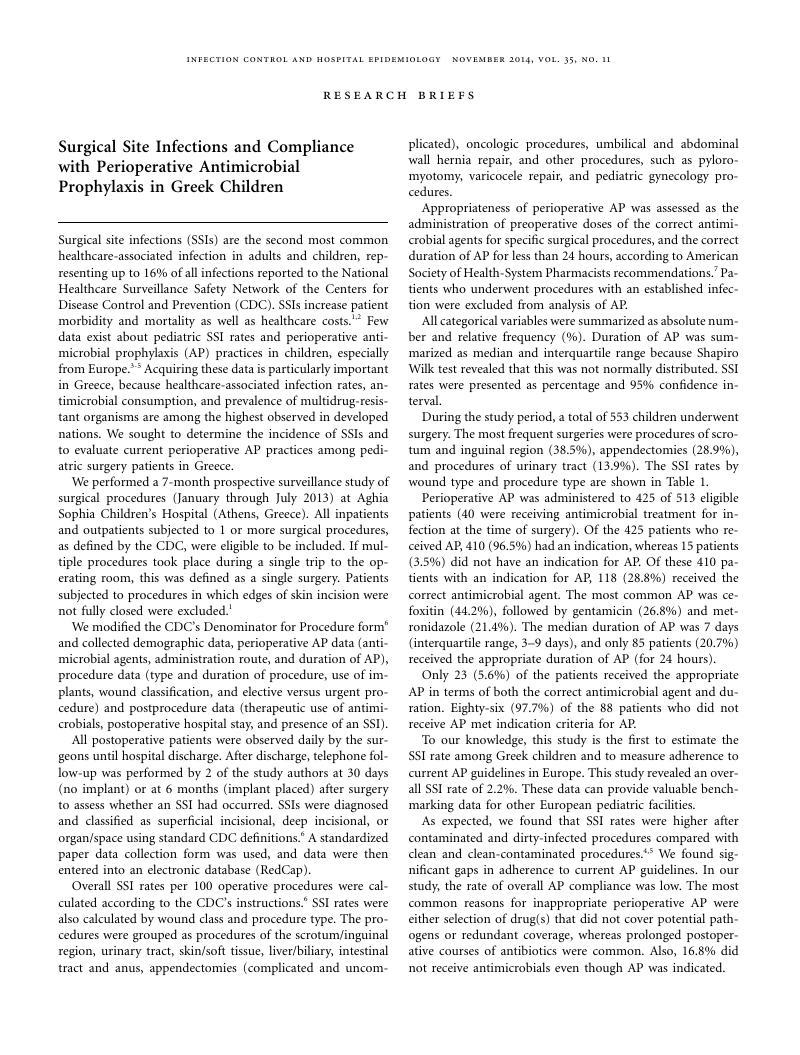Crossref Citations
This article has been cited by the following publications. This list is generated based on data provided by Crossref.
Weinshel, Kristy
Dramowski, Angela
Hajdu, Ágnes
Jacob, Saul
Khanal, Basudha
Zoltán, Maszárovics
Mougkou, Katerina
Phukan, Chimanjita
Inés Staneloni, Maria
and
Singh, Nalini
2015.
Gap Analysis of Infection Control Practices in Low- and Middle-Income Countries.
Infection Control & Hospital Epidemiology,
Vol. 36,
Issue. 10,
p.
1208.
Dimopoulou, Anastasia
Kourlaba, Georgia
Psarris, Alexandros
Coffin, Susan
Spoulou, Vasiliki
and
Zaoutis, Theoklis
2016.
Perioperative antimicrobial prophylaxis in pediatric patients in Greece: Compliance with guidelines and impact of an educational intervention.
Journal of Pediatric Surgery,
Vol. 51,
Issue. 8,
p.
1307.
Mohamed Rizvi, Zafar
Palasanthiran, Pamela
Wu, Camille
Mostaghim, Mona
and
McMullan, Brendan
2020.
Adherence to surgical antibiotic prophylaxis guidelines in children: A cohort study.
Journal of Paediatrics and Child Health,
Vol. 56,
Issue. 1,
p.
34.
Bedir Demirdag, Tugba
Cura Yayla, Burcu Ceylan
Tezer, Hasan
and
Tapısız, Anıl
2020.
Antimicrobial surgical prophylaxis: Still an issue in paediatrics.
Journal of Global Antimicrobial Resistance,
Vol. 23,
Issue. ,
p.
224.
Chorafa, Elisavet
Iosifidis, Elias
Tsiodras, Sotirios
Skoutelis, Athanasios
Kourkouni, Eleni
Kopsidas, Ioannis
Tsopela, Grammatiki-Christina
Chorianopoulou, Evangelia
Triantafyllou, Christos
Kourlaba, Georgia
Zaoutis, Theoklis
and
Roilides, Emmanuel
2021.
Perioperative antimicrobial prophylaxis in adult patients: The first multicenter clinical practice audit with intervention in Greek surgical departments.
Infection Control & Hospital Epidemiology,
Vol. 42,
Issue. 6,
p.
702.
Dimopoulou, Dimitra
Tsakali, Athina
Berikopoulou, Maria M.
Dimopoulou, Anastasia
Kamposou, Vasiliki
Panagopoulos, Dimitrios
Papadakis, Christos-Sotiris
Tokis, Vasileios
Pouli, Konstantina
Bozonelos, Georgios
Anastasopoulos, John
Antonis, Konstantinos
Papapetropoulos, Nektarios
and
Michos, Athanasios
2025.
Adherence to Perioperative Antimicrobial Prophylaxis in Children in the Settings of Neurosurgery, Otorhinolaryngology, and Orthopedics.
Antibiotics,
Vol. 14,
Issue. 2,
p.
125.



